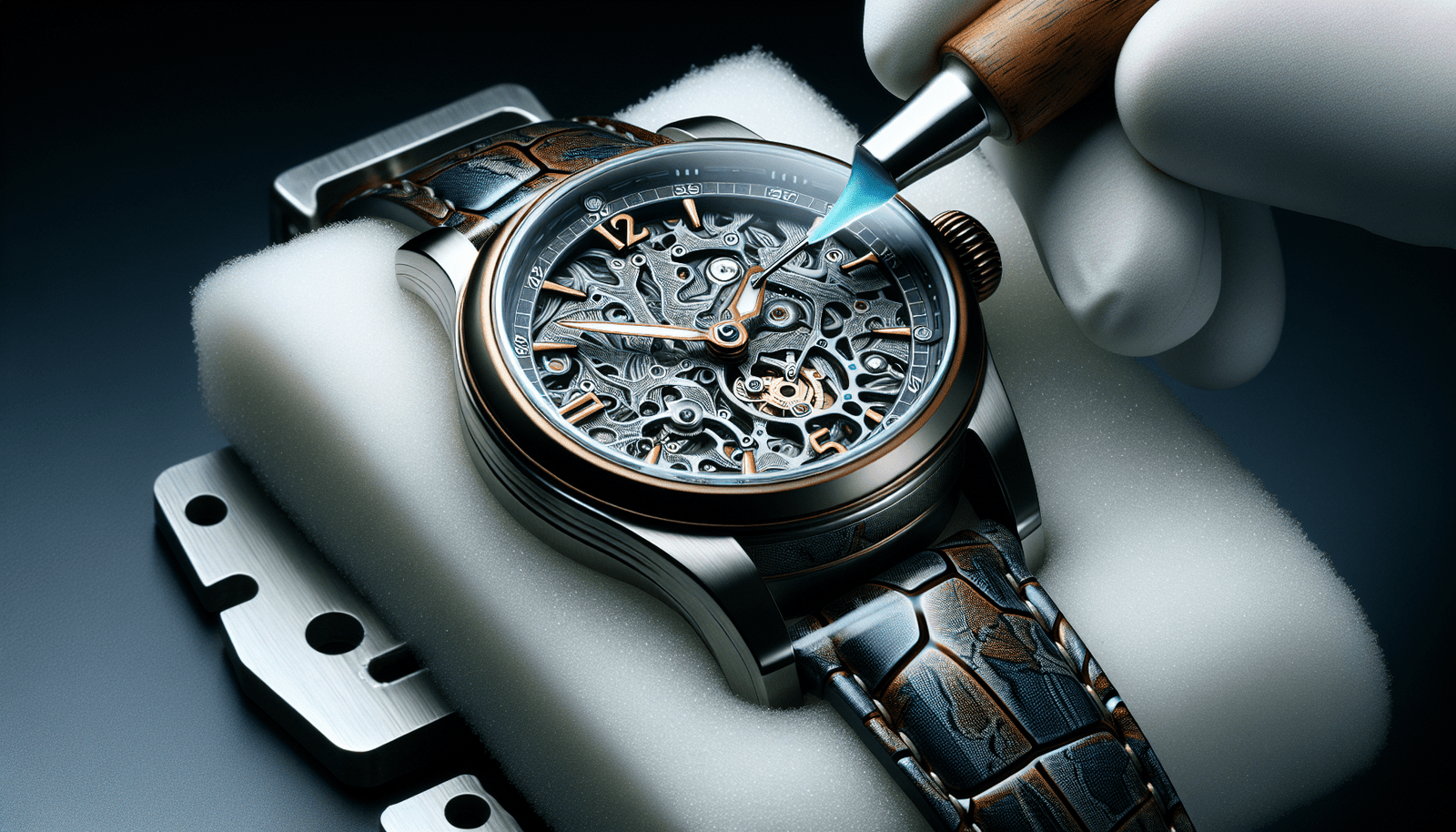
Have you ever wondered about the different types of coatings used on watches? In this article, we will explore the differences between DLC, PVD, and ceramic watch coatings. Whether you’re a watch enthusiast or simply curious about the technology behind these coatings, we will break it down for you in a friendly and easy-to-understand manner. So, let’s jump right in and unravel the mysteries of DLC, PVD, and ceramic watch coatings!

DLC Watch Coating
What is DLC?
DLC, or Diamond-Like Carbon, is a type of watch coating that is known for its exceptional hardness and durability. It is a thin film coating that consists of carbon atoms bonded in a diamond-like structure. DLC coatings have a distinct dark grey or black color, which adds a sleek and stylish appearance to watches.
How is DLC applied?
The DLC coating is applied to watch cases using a process called Physical Vapor Deposition (PVD). In this process, a high-energy vacuum is created, and carbon-based gases are introduced into the chamber. The carbon atoms bond with the surface of the watch case, forming the durable DLC coating.
Advantages of DLC coating
There are several advantages to DLC coating on watch cases. Firstly, its exceptional hardness provides excellent scratch resistance, protecting the watch from everyday wear and tear. DLC coatings also offer high chemical resistance, making them resistant to corrosion and tarnishing. Additionally, the dark color of DLC coatings gives watches a sleek and modern look, enhancing their overall aesthetic appeal. Lastly, DLC coatings exhibit a low coefficient of friction, reducing the likelihood of fingerprints and smudges on the watch’s surface.
Disadvantages of DLC coating
While DLC coatings have numerous advantages, there are some disadvantages to consider. One potential drawback of DLC coatings is their relatively high cost compared to other watch coatings. The complex and sophisticated process of applying DLC coatings contributes to their higher price point. Additionally, despite their exceptional scratch resistance, DLC coatings can still be subject to wear over time, especially if exposed to abrasive materials or environments. It is also worth noting that DLC coatings may not be as readily available or customizable as other coating options.
PVD Watch Coating
What is PVD?
PVD, or Physical Vapor Deposition, is a popular watch coating technique that has been widely used in the watchmaking industry. It is a process that involves vaporizing solid metal alloys and depositing them onto the watch’s surface, forming a thin film coating. PVD coatings often come in various colors, allowing for greater customization and versatility in watch designs.
How is PVD applied?
The application of PVD coatings involves a specialized vacuum chamber. The chamber is filled with the metal alloys, such as titanium, gold, or rose gold, which are evaporated using heat or plasma. The vaporized particles then bond with the watch’s surface, creating a durable and decorative coating.
Advantages of PVD coating
PVD coatings offer several advantages that make them a popular choice for watch coatings. Firstly, they provide good scratch resistance and protect the watch against daily wear and tear. PVD coatings can also enhance the watch’s appearance by introducing different colors and finishes, such as gold or rose gold. The versatility of PVD coatings allows for a wide range of customization options to match personal style preferences. Additionally, PVD coatings are generally more affordable compared to DLC coatings, making them an attractive option for those seeking a durable yet cost-effective watch coating.
Disadvantages of PVD coating
Despite their advantages, PVD coatings have a few potential drawbacks. One disadvantage is that PVD coatings may not be as scratch-resistant as DLC coatings. While they offer good protection against typical daily use, they may be more susceptible to scratches from harder materials. Additionally, the color of PVD coatings may fade or wear off over time, especially if exposed to harsh conditions or abrasive substances. Lastly, the customization options for PVD coatings may be limited compared to DLC coatings, as not all metals are suitable for the PVD process, potentially restricting the variety of color choices available.

Ceramic Watch Coating
What is ceramic coating?
Ceramic coating is a type of watch coating that utilizes advanced ceramic materials. Unlike traditional ceramic, which tends to be brittle, ceramic coatings for watches are made to be highly durable and resistant to scratching. Ceramic coatings are known for their excellent hardness and resistance to wear, making them an attractive option for watch enthusiasts.
How is ceramic coating applied?
The application of ceramic coating involves a specialized process. The watch case is thoroughly cleaned and prepared to ensure proper adhesion of the ceramic material. The ceramic coating is then applied evenly to the watch’s surface through techniques such as brush painting, dipping, or spraying. Afterward, the watch case is subjected to high temperatures, allowing the ceramic coating to harden and bond with the watch’s surface.
Advantages of ceramic coating
Ceramic coatings offer numerous advantages that make them highly sought-after in the watch industry. One of the significant advantages is their remarkable scratch resistance. Ceramic coatings are known for their hardness, making them highly resistant to scratches and scuffs. Additionally, ceramic coatings provide exceptional chemical resistance, protecting the watch against corrosion and tarnishing. Ceramic coatings also offer a hypoallergenic property, making them an excellent choice for those with sensitive skin. Another advantage is the versatility of colors available with ceramic coatings, allowing for greater customization and personalization of watch designs.
Disadvantages of ceramic coating
Despite their advantages, ceramic coatings have a few disadvantages to consider. One potential drawback is their brittleness compared to other coating options. While ceramic coatings are highly scratch-resistant, they may be more susceptible to cracking or chipping when exposed to significant impacts or sudden shocks. Additionally, ceramic coatings may require professional maintenance or reapplication if the coating becomes damaged or worn over time. It is also worth noting that the customization options for ceramic coatings may be limited compared to PVD coatings, as the range of colors available may not be as extensive.
